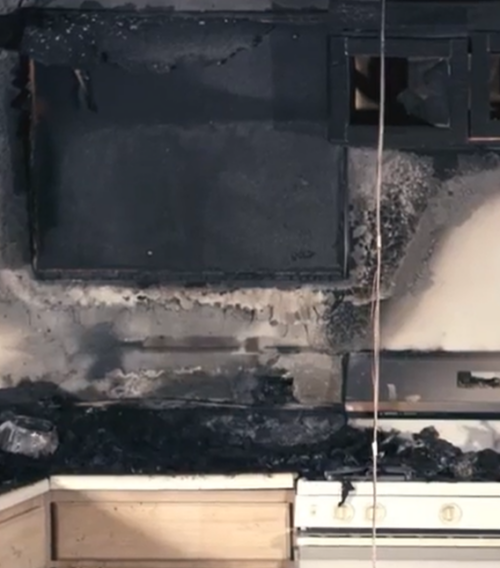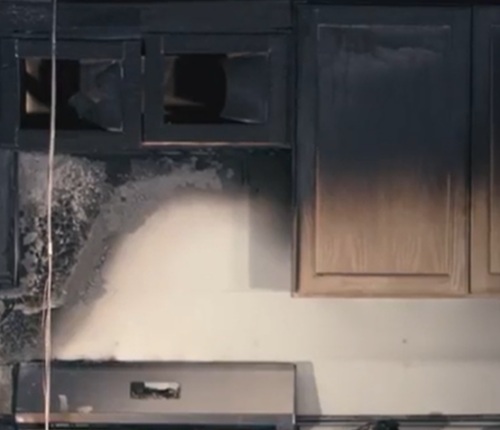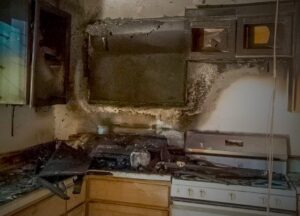A thermal plume is a column of smoke and hot gases. As gases from a fire heat up and rise, they leave behind a V-shaped pattern of soot and ash. This pattern indicates the direction in which hot gases moved, and it can point to an origin.

A line of demarcation is the border between an area that was affected by heat/smoke and an area that was not. As the temperature of the gases produced by fire changes, their density also changes. This causes them to move through a room leaving behind lines of demarcation. These lines indicate the direction in which smoke (hot gases) moved during a fire.



